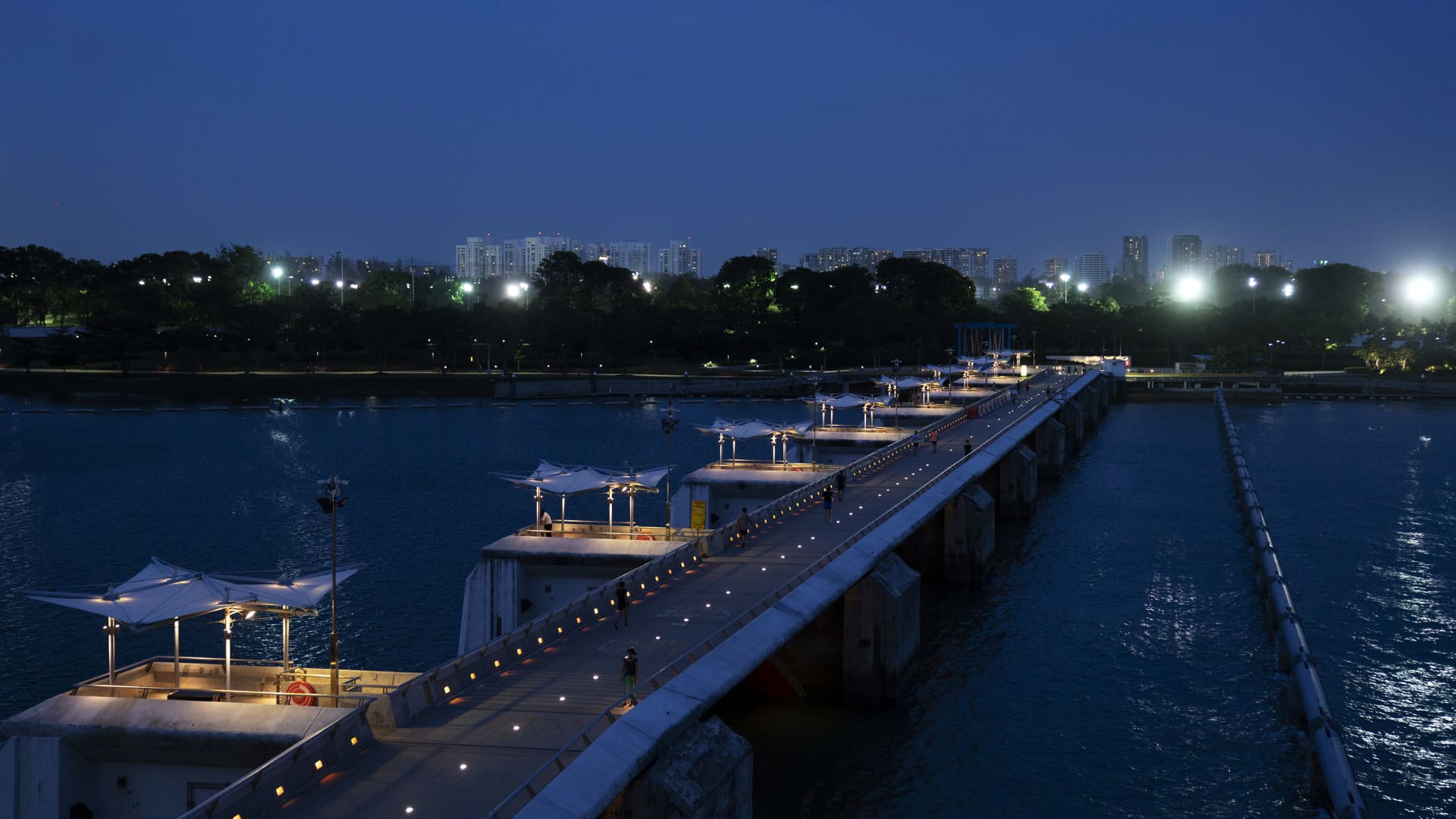The Singapore government has pledged US$74.15 billion over the next century to protect the city from rising temperatures and flooding.
Bloomberg | Bloomberg | Getty Images
Singapore, a small city-state with an import-dependent economy, is particularly vulnerable to rising sea levels, heat waves and other adverse effects of climate change.
That’s why the government has pledged S$100 billion ($74.15 billion) over the next century to help the country weather and minimize damage from greenhouse gas emissions. This is an adaptive approach, distinct from mitigation measures such as carbon pricing and renewable energy.
However, experts warn that public funding alone will not be enough to adapt Singapore’s infrastructure and economy to higher temperatures. Private sources of capital from banks, insurers and financial markets will be needed, in addition to blended financing projects involving public-private partnerships, they said.
This problem is not unique to Singapore.
Globally, financing for climate change adaptation has historically lagged behind mitigation investments focused on slowing or halting rising fossil fuel emissions.
Xinying Tok, head of Southeast Asia at environmental consultancy Carbon Trust, said this is largely because of the widespread perception that adaptation and resilience projects are not actually generating revenue.
She went on to say that a lack of understanding of adaptability and resilience leads to the mispricing of financial solutions, whether it be investments, credit or insurance.
Singapore’s climate challenge
In 2019, Singapore’s Prime Minister Lee Hsien Loong said climate change was a matter of “life and death” for the city-state.
Sea levels are projected to rise by 1 meter by 2100, but depending on storm surges, land subsidence and other factors, sea levels could be 4 or 5 meters higher than current levels, according to the authorities.
Such growth could ‘potentially submerge a third of Singapore’, Grace Fu, the minister of sustainable development and environmentexplain.
Emirhan Ilhan, an assistant professor at the National University of Singapore Business School and a research affiliate of the Institute for Sustainable and Green Finance, explained that climate adaptation projects include building resilient water systems to cope with water scarcity during droughts, and building barriers such as sea walls to prevent Sea-level rise.
Because such ventures improve existing infrastructure, they are often financed from public sources, but “cooperation with the private sector is also necessary because no government can afford the full cost of these projects,” he said.
“While the sense of urgency to address adaptation has been widely communicated from top to bottom by city-states, the role of the private sector and markets in adaptation has yet to be clearly articulated,” said researchers at a research institute. Report by the Singapore Green Finance Center (SGFC) In February.
SGFC is an initiative of Imperial College London and Singapore Management University, launched in 2020 to advance climate finance solutions.
mobilize private capital
1. Cat Bonds
Catastrophe bonds – designed to raise money for insurance companies in the event of a natural disaster – are a much-touted mechanism for climate adaptation.
The Monetary Authority of Singapore, the country’s financial regulator and de facto central bank, has been supporting the industry through its Insurance-Linked Securities Grant Scheme, which helps fund the upfront costs of issuing these debt instruments.
As of the end of 2022, the program had issued 23 catastrophe bonds and has been extended through the end of 2025.
2. Green bonds
Green bonds are another option, but so far the field has been largely dominated by public sector activity focused on mitigating climate change through improved energy efficiency, clean transport and sustainable water management.
The corporate green bond market, which lags behind government issuance, is also heavily skewed toward climate mitigation measures. In 2020, Vena Energy became the first Singapore company to issue a US dollar green bond, issuing a US$325 million five-year green bond aimed at refinancing existing corporate loans for green projects.
De-Risk Adapting to Opportunity
World Resources Institute
When private investors feel the risk-reward trade-off is insufficient, Singapore must get the incentives right, through subsidies or reduced burdens such as taxes or regulation, Ilhan said.
“The good news is that Singapore is very good at having predictable and enforceable regulation – so there is reason for optimism,” he said.
“Hybrid Financing”
mixed financeOr public-private partnerships are critical for infrastructure projects such as climate-proof airports, coastal protection programs and developing local food production.
in a Report Guarantees, co-financing or other risk-mitigating methods offered by public players and development finance institutions can help attract private capital, according to a report released last month by the World Resources Institute (WRI).
Another way to increase blended financing is to introduce more risk-tolerant capital structures, the report said, citing Lightsmith Climate Resilience as an example of a private equity fund investing in solutions to climate change impacts.
“The fund uses donor money to create a risk-absorbing junior layer that has a higher potential for loss and helps reduce the level of risk for subsequent investors” — making Wrightsmith attract about $3.30 for every $1 donated The direct business investment is by public financial institutions, the World Resources Institute report explains.
Looking ahead, Carbon Trust’s Tok recommends greater market coordination.
Given the difficulty of pricing physical risk, market participants in Singapore could benefit from “shared modeling support that compares the potential costs of a range of economic activities with the costs of adaptation,” she concluded.


